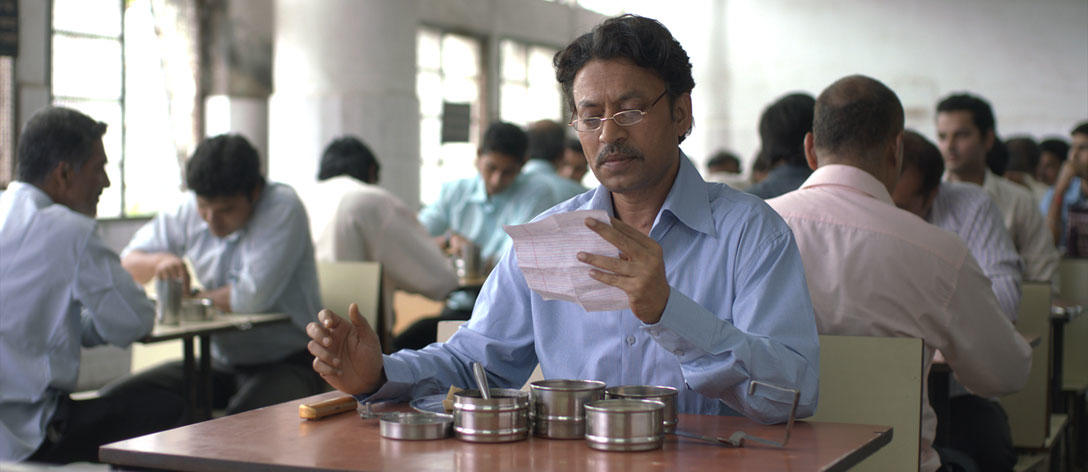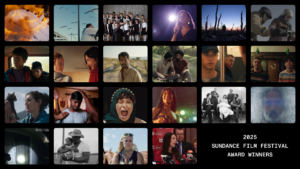Ritesh Batra’s “Lunchbox”
Sundance Institute
Over the past five years, Sundance Institute’s sustained focus on Indian cinema has provided support for some of the most notable independent films from India in recent years, including Prashant Nair’s Umrika, which won the Audience Award at the 2015 Sundance Film Festival; Shonali Bose’s Margarita With A Straw, winner of the NETPAC Award at the 2014 Toronto Film Festival; and Neeraj Ghaywan’s Masaan, which made its world premiere in Un Certain Regard at the 2015 Cannes Film Festival, where it received the Avenir Prize. After five editions of its Screenwriters Labs in India supporting nearly 40 fellows and their projects, Sundance Institute will spend the coming year evaluating its program to make sure it continues to respond to the challenges facing the country’s independent filmmakers.
The Institute was first inspired to create a dedicated Screenwriters Lab in India after selecting Ritesh Batra for the 2009 Screenwriters and Directors Labs. Batra’s feature debut, The Lunchbox, premiered at Semaine De La Critique at the 2013 Cannes Film Festival, went on to an acclaimed festival run, including Sarajevo, Telluride, and Toronto, and was acquired by Sony Pictures Classics.
In recent years, writer-director Anurag Kashyap had opened a path for a more daring brand of cinema with his two-part gangster epic Gangs Of Wasseypur, and began to champion a new generation of independent Indian filmmakers through his production company Sikhya, which produced The Lunchbox and Masaan, among others. Sundance also saw Batra as part of a new generation of Indian filmmakers working outside the traditional Bollywood model.
While India is most well-known for its Hindi-language Bollywood blockbusters, which are exported all over the world, it also has a thriving regional industry with its own genres and styles in more than 20 dialects across the country. “Malayalam, Tamil and Marathi Cinema in particular have the infrastructure and a very passionate audience. If a film is appreciated, it’s given space to flourish,” says Kashyap.
Geetu Mohandas, a 2015 Lab fellow, is making her Malayalam language debut with her new film Moothon, a point of pride for the Kerala-based filmmaker. “Making a film in my mother tongue is a very emotional experience, and one which comes with its share of apprehensions,” she says. ”The success of Liar’s Dice convinced me of the universality of my ideas on storytelling, and with Moothon I eagerly anticipate the reception it will receive back home,” said Mohandas.

Mohandas is in the midst of pre-production for her feature film Moothon, which follows a boy’s journey from the Lakshadweep islands off the coast of southern India to Mumbai in search for his lost older brother. The film, which will start shooting later this month, boasts some of India’s leading talent: Nivin Pauley, one of the major stars of Malayalam cinema; acclaimed cinematographer Rajeev Ravi; as well as Kashyap, who co-wrote the dialogue.
Moothon is Mohandas’ follow-up to Liar’s Dice, which premiered at the 2014 Sundance Film Festival, won Best Actress and Best Cinematography at India’s National Film Awards, and was India’s submission to the 2015 Academy Awards. “Receiving support from Sundance Institute for Moothon has been a huge impetus to me on a personal level, to persevere with my vision and originality in telling stories that could be lost in a purely commercial market, while also greatly accelerating the process of approaching producers and securing funding,” says Mohandas. “Sundance has truly great mentors from around the world who helped me explore a multitude of perspectives to my story, while also keeping the narrative strongly rooted within an Indian perspective.”
Support for world cinema has long been part of the Sundance Institute mission. The international arm of the Feature Film Program brings filmmakers from around the world to the Institute’s Screenwriters and Directors Labs in Utah. Beginning in the 1990s, the program exported that model to cultivate exciting new generations of filmmakers in specific countries, starting with Mexico and Brazil, which supported the early feature films of Alfonso Cuaron (Love in the Time of Hysteria), Guillermo Del Toro (The Devil’s Backbone), Walter Salles (Central Station), and Braulio Mantovani (City Of God). In the years since, the Institute’s international work has evolved to other regions, including Turkey, Japan, Central Europe, the Mediterranean, and the Middle East.
Modeled on the Institute’s signature Screenwriters Labs in Utah, the international labs are designed to create practical working environments to help the screenwriting fellows fulfill their creative vision. One of the hallmarks of the lab model is to provide a forum for artist-to-artist dialogue. Creative Advisors at the Labs in Utah and abroad are working filmmakers, and across the Institute’s five years in India, the Labs were fortunate to be driven by an accomplished group of Creative Advisors who brought their passion and insight to India, including Guillermo Arriaga (Amores Perros, Babel), Shekhar Kapur (Elizabeth, Four Feathers), Thomas Bidegain (The Prophet, Rust And Bone), Naomi Foner (Running on Empty, Very Good Girls), Asif Kapadia (Senna), Marti Noxon (Glee, Mad Men) and Carlos Cuaron (Y Tu Mama Tambien), among many others.
The Institute has been grateful to work with partners on the ground in India equally committed to supporting a diverse and bold group of young filmmakers. The collaboration began with Mumbai Mantra, part of the Indian multinational corporation Mahindra, and continued for two years with financier Manish Mundra and his Drishyam Films imprint.
Even as Sundance Institute looks to revamp its program in India, it continues to support Indian alumni outside the Lab environment. Currently, Feature Film Program staff are working closely with Sandhya Suri, a Screenwriting Fellow from the 2015 Lab in Goa, who was subsequently selected to Sundance’s January Screenwriters and June Directors Labs in Utah for her first feature Santosh. In the time since, the Institute has provided feedback on subsequent drafts of the screenplay and is currently strategizing with Sandhya on potential producers and financiers.

“Coming from a documentary background, the step to making a narrative feature seemed enormous,” says Suri. “The input from the Labs was instrumental in helping me shape the script and really understand the heart of my story and motivations for telling it. It was also great to know that after the Lab I had Sundance Institute partners who want to see the film made as much as I do and could offer strategic support to help me get there. The road to making an independent production, especially in India, is not an easy one, and it has been incredible to have Sundance Institute continue to be by my side on this journey.”
The landscape of independent cinema in India continues to evolve. Without the state-sponsored funding available in Europe and Latin America, financing for independent projects remains scarce, with theatrical distribution even more challenging. According to veteran producer Guneet Monga, “An independent production has to raise double the budget of the film, because they also need a marketing budget to compete for the same screens and channels that commercial films do, making it very difficult for indie films to break through the unending clutter.”
The arrival of digital outlets, in conjunction with better internet access for more of the population, has created a new space for independent cinema, although it can be a double edged sword, says Kashyap. “Netflix and Amazon are better options for independent filmmakers here, although I fear that now the exhibitors will focus exclusively on the commercial market.”

Nearly six years after the first Screenwriters Lab in India, the Institute views the coming year as an opportunity to craft support for independent filmmakers in a way that suits a landscape changing as rapidly as the country itself. “We hope to continue to support stories representing a wide range of regions and dialects that address pressing issues in contemporary India, ranging from religious intolerance to homosexuality to sexual violence against women, subjects that, even in the world’s largest democracy, remain largely taboo,” says Paul Federbush, the Feature Film Program’s International Director. “The market in India is huge and complex, but the space for independent cinema is still nascent and evolving. We are looking to augment our work to not only support the most exciting new Indian filmmakers but to also make sure their work reaches a wide audience,”
As Batra wraps post-production on the upcoming Our Souls Of Night, starring Robert Redford, he reflects on his experience at the Labs. “The notion of telling Indian stories to the world has always attracted me – it is perhaps what I would call the purpose of my life. My experience at the Sundance Institute Labs and then during the making of The Lunchbox left me with an invaluable gift, that the more local, the more specific the story and the characters, the more universal they become. This is why Sundance Institute is such an invaluable part of independent cinema. We have an opportunity in India to be proud of our own stories, to trust that the local and specific can be universal. I appreciate the Feature Film Program bringing their expertise to our film communities in India, because there is no better bridge than Sundance.”




